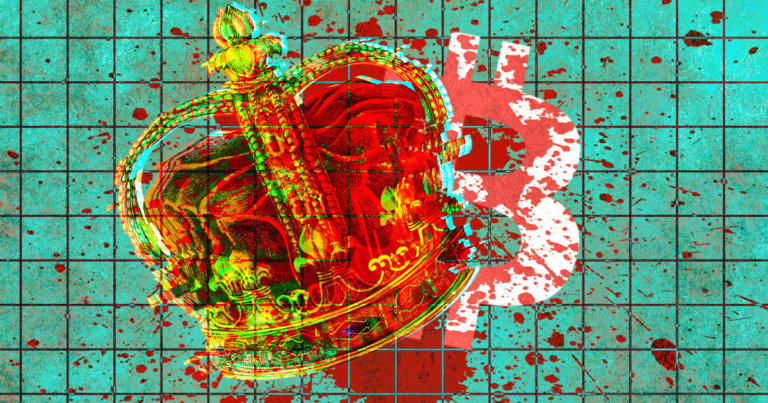 Was Netflix’s “Trust No One: The Hunt For The Crypto King” a propaganda play?
Was Netflix’s “Trust No One: The Hunt For The Crypto King” a propaganda play? Was Netflix’s “Trust No One: The Hunt For The Crypto King” a propaganda play?
The Netflix documentary brings cryptocurrency to the masses, albeit from a less than flatterring set of circumstances.

Cover art/illustration via CryptoSlate. Image includes combined content which may include AI-generated content.
The saying, “there’s never a dull moment in crypto,” greatly embodies what went down at QuadrigaCX all those years ago.
The circumstances surrounding the death of its founder Gerald Cotten rank highly as one of the greatest mysteries in the industry.
It was initially claimed that only Cotten could access the exchange’s cold storage funds. But this crumb of comfort for investors (desperate to get their funds back) turned out to be a dead end, as further investigations showed the wallets were empty.
Around 76,000 investors lost a collective sum of CAD$169 million (US$135 million) in the scandal. Although there is an ongoing lawsuit to recover the funds, the odds of a complete recovery are slight.
Some three years since Cotten’s death, Netflix has released a documentary on what transpired. It covered the incident from the perspective of interested parties, including several customers, journalists investigating the case, and even the sister of Cotten’s wife, as they attempted to piece together what happened.
The documentary arrived at the same conclusion as the investigation by the Ontario Securities Commission (OSC). But it also revealed that Cotten wasn’t as squeaky clean as his public image portrayed, which wasn’t widely known or discussed at the time things were blowing up.
In any case, considering the misinformation and negative portrayal of cryptocurrency sometimes seen in mainstream media, did Netflix present a balanced and fair account of what happened?
The twists and turns in the QuadrigaCX story
The sudden death of Cotten in India at the tail end of 2018 led investors and investigators on a wild goose chase. In the scramble for answers, discrepancies against expectations only fueled further speculation that something was amiss.
The documentary provided a comprehensive round-up of what these inconsistencies could suggest, including the hypothesis that Cotten had faked his death and exit scammed investors. It touched on things like the death certificate giving the date of death as December 9, 2018. Yet strangely, the announcement of his death was made over a month later, on January 14, 2019.
It also mentioned the oddity of his name being misspelled on the death certificate. While the fact no autopsy was conducted gave further reason to suspect something was awry.
Other speculative potshots include the unlikelihood of an otherwise young and healthy man dying of Crohn’s disease. According to this study published by the National Center for Biotechnology Information website, the risk of death from Crohn’s disease is small, with an annual mortality rate of around 1.6%.
Things take an even darker twist as viewers are presented with the theory that Cotten’s wife, Jennifer, had poisoned him. This line of thinking was based on several observations, such as Jennifer’s apparent liveliness and/or “fake grieving” at the funeral and the affidavit she filed that contradicted the extent to her involvement with QuadrigaCX operations.
While all these things were widely reported at the time, the Netflix documentary also revealed Cotten had a secret that few knew about – Cotten, the “nice nerdy guy” who was always smiling, was a serial scammer.
Cotten enjoys the thrill of a Ponzi scam
Enter Michael Patryn, who described himself as an advisor to QuadrigaCX, but some speculate he co-founded the operation with Cotten in 2013.
Patryn had met Cotten in 2003 via a website called TalkGold when Cotten was aged 15. The main content topic on TalkGold was high yield investment programs (HYIPs), or what could be commonly referred to as Ponzi schemes.
“Flickering banner ads for investments in precious metals and foreign exchange funds and “real offshore returns” buffered message boards offering something for everyone: scammers, marks, and those who belonged to both categories.”
The pair would become active contributors to the TalkGold message boards, developing a friendship based on their shared love of picking the pockets of others.
The TalkGold site also provided a “training ground” for the pair to hone their skills while also connecting them to the underworld. This led them to form a payment processing firm called Midas Gold, which laundered money for a shady Costa Rica-based digital currency service called Liberty Reserve.
Although Patryn is credited as being the brains behind Midas Gold, its registration documents show the contact email as [email protected]. The operation was later disbanded as law enforcement shut down Liberty Reserve.
Fast forward to October 2013, and Cotten took out a job ad on the online forum BlackHatWorld. He was looking for a programmer to develop a website where people could trade Bitcoin. It was shortly after this that QuadrigaCX went live.
This thread would suggest that QuadrigaCX, although it had a veneer of respectability and was turning over $2 billion a day at its peak, was intended as a scam from the beginning.
What happened to the missing crypto?
An executive summary by the OSC pointed out that poor internal controls at QuadrigaCX enabled Cotten to steal user funds.
“Operating without any proper system of oversight or internal controls, Cotten was able to misuse client assets for years, unchecked and undetected, ultimately bringing down the entire platform.”
Cotten treated QuadrigaCX like his personal bank account, using client funds to trade cryptocurrency. Sustaining losses meant a shortfall in balances, which Cotten dealt with in true Ponzi scheme style – by using new deposits to pay for withdrawals. All the while running an ever-growing deficit.
Investigators estimate Cotten sustained $28 million in misappropriated traded losses. With more money taken out to fund his lavish lifestyle, which included ownership of a yacht, private jet, and 14 rental properties that brought in additional income.
However, the OSC report made it clear that what happened at QuadrigaCX was not reflective of the entire crypto industry.
“The misconduct we uncovered in relation to Quadriga is limited to Quadriga and should not be understood as applying to the crypto asset platform industry as a whole.“
The Netflix documentary featured OSC agent Daniel Tourangeau, who explained the agency’s findings to viewers. In concluding his piece, Tourangeau said Cotten had masterminded this “massive fraud” all on his own.
How was the documentary received?
The reviews for Trust No One: The Hunt For The Crypto King were mixed. The Review Geek called it “a well research docu-film” that’s “well worth checking out.”
“a decent documentary though and well worth checking out. It’s a sobering reminder of how dangerous and unpredictable cryptocurrency currently is and a well researched docu-film that sheds light on a mysterious and bizarre case.”
Similarly, the Guardian said the brisk pace and absorbing content drew viewers in. It concluded with “more like this please.”
On the other hand, Hollywood Insider said the documentary was less than the sum of its parts and didn’t provide a deep enough dive. In summing up, the reviewer likened it to an appetizing meal that’s too small in size.
Scanning social media, a Reddit poster went as far as calling it propaganda. They interpreted the show as an attempt to discredit the cryptocurrency industry by portraying it as a seedy underbelly filled with greedy and gullible investors.
The show did feature elements of greed, most notably from an investor who took out a loan to trade cryptocurrency in the hopes of keeping up with his friends. But there was no attempt at depicting, or insinuating, that every cryptocurrency investor is greedy or gullible.
Psychologists would call this discrepancy an instance of the horns and halo effect. This refers to a cognitive bias in thinking that arises from an individual’s worldview, personality, and/or beliefs regarding a particular topic.
The overall message of Trust No One: The Hunt For The Crypto King was not to stay away from crypto. Instead, it tied things up by making the point that people jump down the craziest rabbit holes whenever there’s a mystery to solve.






















































